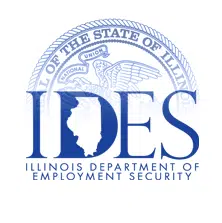
For Immediate Release
Statewide Unemployment Rate Down, Payroll Jobs Up Significantly in October
SPRINGFIELD – The Illinois Department of Employment Security (IDES) announced today that the unemployment rate fell -0.2 percentage point to 6.0 percent, while nonfarm payrolls increased by +40,900 in October, based on preliminary data provided by the U.S. Bureau of Labor Statistics (BLS) and released by IDES. The preliminary report for September monthly payrolls was revised from +9,200 to +11,000 jobs. The September unemployment rate was also revised from the preliminary report, decreasing from 6.8 percent to 6.2 percent, as a result of a large downward revision that the BLS introduced to September statewide unemployed. More information on the September unemployment rate revision can be found in the attachment to this news release.
The October payroll jobs estimate and unemployment rate reflects activity for the week including the 12th. The BLS has published FAQs for the October payroll jobs and the unemployment rate.
In October, the three industry sectors with the largest over-the-month gains in employment were: Professional and Business Services (+17,700), Leisure and Hospitality (+8,400) and Trade, Transportation and Utilities (+7,700). The industry sectors that reported the monthly payroll declines were: Information (-1,500) and Educational and Health Services (-500).
“Today’s data are positive markers indicating a continued recovery to our economy and labor market,” said Deputy Governor Andy Manar. “IDES continues to work with employers and jobseekers to assist matching businesses with those looking to reenter the workforce or make career changes. Both employers and jobseekers are encouraged to take advantage of Get Hired Illinois to search for available jobs and workers in their area.”
“Under Governor Pritzker’s leadership, Illinois is on the path to recovery and is bringing back Illinois consumers and industries safely,” said DCEO Acting Director Sylvia Garcia. “Monthly labor reports continue to prove that our administration’s investments to stimulate small businesses, deliver workforce development grants and jumpstart community and capital development projects across our state are paying dividends. Building on a strong national jobs report last month, Illinois is seeing our own impressive growth with nearly 41,000 jobs added statewide in October alone.”
The state’s unemployment rate was +1.4 percentage points higher than the national unemployment rate reported for October, which was 4.6 percent, down -0.as 2 percentage point from the previous month. The Illinois unemployment rate was down -2.1 percentage points from a year ago when it was at 8.1 percent.
Compared to a year ago, nonfarm payroll employment increased by +190,300 jobs, with gains across nearly all major industries. The industry groups with the largest jobs increases were: Leisure and Hospitality (+60,800), Professional and Business Services (+50,000), and Trade, Transportation and Utilities (+37,200). Financial Activities (-5,200) was the only industry group that reported jobs losses. In October, total nonfarm payrolls were up +3.4 percent over-the-year in Illinois and +4.1 percent in the nation.
The number of unemployed workers was down from the prior month, a -3.4 percent decrease to 370,400, and was down -27.7 percent over the same month for one year ago. The labor force was up +0.1 percent over-the-month and was down -1.6 percent over-the-year. The unemployment rate identifies those individuals who are out of work and seeking employment. An individual who exhausts or is ineligible for benefits is still reflected in the unemployment rate if they actively seek work.
In May 2020, Governor Pritzker launched Get Hired Illinois, a new one-stop-shop website to help connect job seekers with hiring employers in real time. The site features virtual job fairs, no-cost virtual training, and includes IllinoisJobLink.com (IJL), the state’s largest job search engine, which recently showed 51,412 posted resumes with 162,087 available jobs.
Seasonally Adjusted Unemployment Rates
Illinois Seasonally Adjusted Nonfarm Jobs – by Major Industry
- 1976-2020 seasonally adjusted labor force data for Illinois, and all other states, have been revised as required by the U.S. Bureau of Labor Statistics (BLS). The monthly historical revisions to state labor force estimates reflect new national benchmark controls, state working-age population controls, seasonal factors, as well as updated total nonfarm jobs and unemployment benefits claims inputs. Illinois labor force data were also smoothed to eliminate large monthly changes as a result of volatility in the monthly Current Population Survey (CPS) and national benchmarking. For these reasons, the comments and tables citing unemployment rates in previous news releases/materials may no longer be valid.
- Monthly seasonally adjusted unemployment rates for Illinois and the Chicago-Naperville-Arlington Heights Metropolitan Division are available here.
- Monthly 2016-2020 seasonally adjusted nonfarm payroll employment data for Illinois have been revised. To control for potential survey error, the estimates are benchmarked annually to universal counts derived primarily from unemployment insurance tax reports.
- Not seasonally adjusted jobs data with industry detail are available here. “Other Services” include activities in three broad categories: personal and laundry; repair and maintenance; and religious, grant making, civic and professional organizations. Seasonally adjusted data for subsectors within industries are not available.
About the Department of Employment Security
The Illinois Department of Employment Security (IDES) provides vital employment services to Illinois workers, employers, and job seekers with resources including Job Fairs and IllinoisJobLink.com, analyzes and disseminates actionable Labor Market Information, and administers the Unemployment Insurance Program. To see the full range of services provided by IDES, and for the latest news concerning the department, visit IDES.Illinois.gov.
Explanation of the revision to the September 2021 Illinois statewide unemployment rate
Since the onset of the COVID-19 pandemic, the U.S. Bureau of Labor Statistics has examined state labor force data for unusual monthly changes, also referred to as outliers, and made monthly adjustments based on a statistical evaluation of the monthly changes. Without these adjustments, the BLS statewide labor force models would have discounted a portion of the pandemic impact and would not have reflected accurately the current labor force conditions. Historically, these types of adjustments to monthly state labor force data occur during the annual benchmarking in February of each year, but they have been implemented on a monthly basis since the beginning of the pandemic to be more responsive to the recession’s impact.
In January 2021, BLS introduced an adjustment to the State of Michigan’s labor force model in response to a detected outlier. This adjustment inadvertently created distortions to statewide labor force estimates for Michigan and other states within the East North Central Division (Illinois, Indiana, Ohio, and Wisconsin) for January and all subsequent months through September 2021. One part of the monthly statewide labor force estimation process involves adjusting monthly statewide employed and unemployed estimates to equal monthly Census Division employed and unemployed levels. In turn, Census Division employed and unemployed estimations are adjusted to national monthly employed and unemployed estimates, which ensures that the sum of all states equals national employed and unemployed levels.
The distortions to the state labor force estimates occurred gradually through September 2021 but were only recently identified by the BLS after Illinois and another East North Central Division state raised concerns about their monthly 2021 statewide labor force estimates. The BLS has found that distortions to the Illinois labor force estimates are limited to January-September 2021.
Effective October 2021, BLS changed its approach to detecting and adjusting for outliers in monthly statewide labor force data. This change has reduced distortions to the revised September 2021 statewide labor force estimates and the preliminary October 2021 statewide labor force estimates for Illinois and other states in the East North Central Division. The distortions made to January–August 2021 statewide labor force estimates will be modified during the annual benchmarking process in February 2022.
For more information concerning the BLS adjustment, please call (202) 691-6392 or use the e-mail request form here. For media inquiries, please call (202) 691-5902 or send an e-mail to PressOffice@bls.gov.







Comments